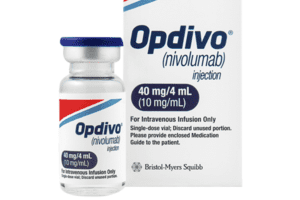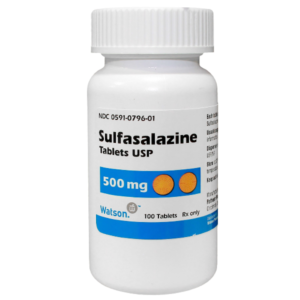Dupixent (dupilmumab): What is it?
Dupixent (dupilumab) is used to treat moderate-to-severe eczema (atopic dermatitis) that is resistant to topical therapy. Dupixent is used to treat eczema in adults and children over the age of six years.
Dupixent may also be used in combination with other medications to treat moderate-to-severe asthma that is resistant to other asthma therapies. It is used to treat asthma in adults and children over the age of six.
Dupixent is used exclusively in adults to treat chronic rhinosinusitis (long-term sinus inflammation) caused by nasal polyps.
What is the mechanism of action of dupixent?
Patients with atopic dermatitis and asthma produce excessive amounts of the proteins interleukin 4 and 13 (IL-4 and IL-13), which can induce inflammation of the skin and airways, resulting in the symptoms of both disorders. Dupixent’s active ingredient, dupilumab, is a monoclonal antibody (a type of protein) designed to block IL-4 and IL-13 receptors (targets). Dupilumab inhibits the action of IL-4 and IL-13 and thereby alleviates illness symptoms.
Dupixent uses
- DUPIXENT® (dupilumab) is a prescription medication used to: • Treat adults and children aged 6 years and older who have moderate-to-severe atopic dermatitis (eczema) that is not effectively managed with topical prescription medications or who are unable to use topical therapies. Dupixent may be used in conjunction with or in lieu of topical corticosteroids. It is unknown whether dupixent is safe and effective in children under the age of six years with atopic dermatitis.
- In combination with other asthma medications, for the maintenance treatment of moderate-to-severe eosinophilic or oral steroid-dependent asthma in adults and children 6 years of age and older who do not respond to their existing asthma medications. Dupixent may help prevent severe asthma attacks (exacerbations) and may help you breathe better. Additionally, Dupixent may help you take fewer oral corticosteroids while reducing severe asthma attacks and improving your breathing. Dupixent is not used to treat acute respiratory distress. It is unknown whether dupixent is safe and effective in children under the age of six years with asthma.
- In combination with other medications in adults with uncontrolled chronic rhinosinusitis with nasal polyposis (crswnp). It is unknown whether dupixent is safe and effective in children under the age of 18 who have chronic rhinosinusitis with nasal polyposis.

Dosage of Dupixent
• DUPIXENT is intended to be used in conjunction with a healthcare provider.
• Using a pre-filled pen or syringe
• The DUPIXENT pre-filled pen is indicated for use in adults and children 12 years of age.
• The pre-filled DUPIXENT syringe is indicated for adult and pediatric patients aged 6 years and older.
• A caregiver or patient 12 years of age or older may inject DUPIXENT with a prefilled syringe or pen. • Under the supervision of an adult, administer DUPIXENT to pediatric patients 12 to 17 years of age. • Under the supervision of a caregiver, administer DUPIXENT pre-filled syringe to pediatric patients 6 to 11 years of age.
Instructions for Administration
• For patients with atopic dermatitis or asthma receiving an initial dose of 600 mg, deliver each of the two DUPIXENT 300 mg injections at a different injection site.
• For patients with atopic dermatitis or asthma receiving an initial 400 mg dose of DUPIXENT, deliver each of the two 200 mg injections at a different injection site.
• Inject subcutaneously into the thigh or abdomen, excluding the two inches (5 cm) surrounding the navel. The upper arm may also be used if the injection is administered by a caregiver.
• With each injection, rotate the injection site. DUPIXENT SHOULD NOT BE INJECTED INTO SENSITIVE, DAMAGED, BRUISED, OR SCARRED SKIN.
For more info visit: https://www.dupixenthcp.com/atopicdermatitis/dosing-administration
Dupixent side effects
Mild adverse reactions:
1. Reactions at the injection site
2. Mild adverse events involving the eyes, such as conjunctivitis (pink eye) or blepharitis (eyelid inflammation)
3. Herpes simplex
4. Joint discomfort
5. Throat or mouth pain
6. Toothache
7. Insomnia
8. Gastroenteritis (inflammation in the stomach)
9. Eosinophilic eosinophilia (increased numbers of white blood cells called eosinophils)
Serious adverse reactions to Dupixent have been documented, including the following:
- Serious eye-related adverse reactions
- Eosinophilic conditions
- Allergic reaction
Interactions with other medications
According to the FDA, the following medications may interact with Dupixent:
- Vaccines that are alive
- Vaccines that are not alive
Should you get vaccinated against the flu?
- For persons taking Dupixent, getting a flu shot is frequently a double-edged sword. Why? Because influenza vaccination can help prevent the flu, immunizations may act differently in those who use Dupixent or who have a damaged immune system.
- Atopic dermatitis is caused by an overactive immune system; Dupixent calms the immune system, alleviating atopic dermatitis symptoms. However, it does it in such a way that the immune system is weakened. This deterioration impairs the body’s ability to fight viruses and diseases.
- While live vaccines have lost their ability to cause disease, medical practitioners advise patients taking Dupixent to avoid obtaining the live (attenuated) flu vaccine. Because non-live vaccinations are not alive, they offer less of a hazard to a weakened immune system. Although a compromised immune system may be unable to develop a robust enough response to the vaccine to protect against the flu.
Information on safety
• Hypersensitivity: Anaphylaxis, serum sickness or serum sickness-like reactions, angioedema, widespread urticaria, rash, erythema nodosum, and erythema multiforme have all been recorded as hypersensitivity reactions. If a hypersensitivity reaction with clinical significance occurs, initiate appropriate therapy and cease DUPIXENT.
• Conjunctivitis and Keratitis: Both conjunctivitis and keratitis occurred more frequently in DUPIXENT-treated atopic dermatitis participants than in placebo-treated subjects, with conjunctivitis being the most frequently reported eye disease. Conjunctivitis also occurred more frequently in DUPIXENT-treated chronic rhinosinusitis with nasal polyposis participants than in placebo-treated subjects. Conjunctivitis and keratitis have been documented in postmarketing settings with DUPIXENT, primarily in individuals with atopic dermatitis. Visual abnormalities (e.g., blurred vision) have been recorded in some patients with conjunctivitis or keratitis. Advise people to contact their healthcare provider if they develop new or worsening eye issues. Consider ophthalmological examination for patients who develop persistent conjunctivitis or signs and symptoms suggestive of keratitis.
• Eosinophilic Conditions: Patients with asthma may develop severe systemic eosinophilia, which may manifest clinically as eosinophilic pneumonia or vasculitis consistent with eosinophilic granulomatosis with polyangiitis (EGPA), both of which are frequently treated with systemic corticosteroid therapy. These adverse effects could be related to the cessation of oral corticosteroid medication. Healthcare practitioners should be on the lookout for vasculitic rash, increasing pulmonary symptoms, cardiac problems, and/or neuropathy in their eosinophilic patients. Eosinophilic pneumonia has been reported in adult subjects participating in the asthma development program, and vasculitis consistent with EGPA has been reported in adult subjects participating in the asthma development program, as well as in adult subjects with co-morbid asthma participating in the CRSwNP development program. There is no evidence of a causal relationship between DUPIXENT and these conditions.
• Acute Asthma Symptoms or Deteriorating Disease: DUPIXENT is not indicated for the treatment of acute asthma symptoms, acute exacerbations, acute bronchospasm, or status asthmaticus. Patients should consult their physician if their asthma continues to be uncontrolled or worsens following the start of DUPIXENT.
• Risk of Abrupt Corticosteroid Dosage Reduction: Do not abruptly withdraw systemic, topical, or inhalation corticosteroids after initiating DUPIXENT. Corticosteroid dose reductions, if necessary, should be gradual and carried out under the direct supervision of a healthcare provider. Reduced corticosteroid doses may be associated with systemic withdrawal symptoms and/or reveal previously repressed disorders.
• Patients with Co-Morbid Asthma: Advise patients with atopic dermatitis or CRSwNP who also have co-morbid asthma to refrain from adjusting or discontinuing their asthma medicines without consulting their physicians.
• Arthralgia has been recorded in association with the use of DUPIXENT, with some patients reporting gait abnormalities or impaired mobility accompanied with joint discomfort; some cases resulted in hospitalization. Advise patients to notify you if they have new or worsening joint complaints. Consider rheumatological examination and/or withdrawal of DUPIXENT if symptoms persist or worsen.
• Infections caused by parasitic (Helminth) worms: It is unknown whether DUPIXENT has an effect on the immunological response to helminth infections. Pre-existing helminth infections should be treated prior to commencing DUPIXENT medication. If patients get an infection while on DUPIXENT and do not respond to anti-helminth medication, halt DUPIXENT treatment until the infection resolves. Helminth infections (5 instances of enterobiasis and 1 case of ascariasis) were documented in pediatric asthma development program children aged 6 to 11 years.
• Immunizations: Prior to commencing DUPIXENT, consider completing all age-appropriate vaccinations as suggested by current immunization standards. Avoid administering live vaccinations to people receiving DUPIXENT.
Is it safe to take Dupixent during pregnancy or breastfeeding?
Inform your healthcare practitioner before beginning to use Dupixent of all your medical conditions, particularly if you are pregnant or plan to become pregnant. Dupixent is not known to cause harm to an unborn child. Dupixent is not known to enter into breast milk.
for more info, visit: https://www.dupixent.com/


